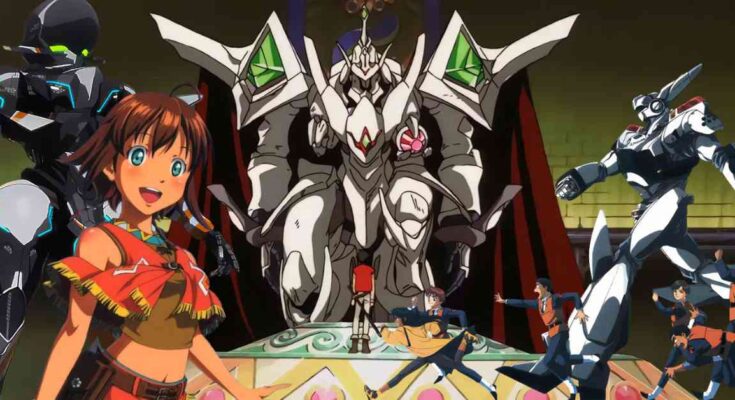Dive into the captivating realm of manga genre involving giant robots, exploring its rich history, iconic series, and cultural impact. Discover the allure of mecha battles and intricate storytelling that have enchanted audiences worldwide.
Introduction:
In the vast landscape of manga, few genres command as much attention and fascination as the manga genre involving giant robots. With its blend of futuristic technology, epic battles, and compelling narratives, this genre has captivated audiences of all ages for decades. From iconic series like “Mobile Suit Gundam” to modern masterpieces like “Neon Genesis Evangelion,” the world of giant robots offers a diverse array of stories and themes to explore.
Now, let’s embark on a journey through the intricacies of this beloved genre, delving into its origins, notable works, and enduring appeal.
Exploring the Origins of Giant Robot Manga
The origins of giant robot manga trace back to the mid-20th century, rooted in the post-war cultural landscape of Japan and influenced by Western science fiction literature. Let’s delve into the fascinating history of how giant robot manga came to be.
The Birth of Mecha: A Brief History
The term “mecha” originates from the Japanese word for mechanical, and it encompasses a wide range of robotic constructs, including humanoid robots, vehicles, and weapons. The concept of mecha first emerged in Japanese science fiction literature of the 1950s, inspired by the rapid technological advancements and social transformations occurring in the aftermath of World War II.
One of the earliest examples of giant robot manga is “Tetsujin 28-Go” (“Gigantor” in the West), created by Mitsuteru Yokoyama and serialized from 1956 to 1966. “Tetsujin 28-Go” featured a colossal robot controlled by a young boy named Shotaro Kaneda, who used it to fight against villains and protect the innocent. This seminal work laid the foundation for many future giant robot stories, introducing themes of heroism, friendship, and the ethical implications of advanced technology.
Pioneering Creators and Influential Works
Throughout the 1960s and 1970s, pioneering creators like Go Nagai and Shotaro Ishinomori pushed the boundaries of the mecha genre, introducing new concepts and storytelling techniques that would shape its evolution for decades to come. Go Nagai’s “Mazinger Z,” which debuted in 1972, featured the titular giant robot piloted by teenager Koji Kabuto as he battled against the forces of evil. “Mazinger Z” introduced groundbreaking elements such as the use of a cockpit inside the robot’s head and the concept of combining multiple robots into a single, more powerful form.
Another influential work from this era is “Getter Robo,” created by Go Nagai and Ken Ishikawa in 1974. “Getter Robo” explored themes of teamwork and sacrifice as a team of pilots fought against an alien invasion using three giant robots that could combine into different configurations. The series popularized the concept of robot combinations, paving the way for future mecha series like “Voltron” and “Power Rangers.”
Evolution of Mecha Designs and Themes
As the mecha genre continued to evolve, creators experimented with new designs and themes, reflecting the changing social and technological landscape of Japan. In the 1980s, series like “Mobile Suit Gundam,” created by Yoshiyuki Tomino, introduced a more realistic and gritty approach to mecha storytelling, exploring themes of war, politics, and human nature. “Gundam” revolutionized the genre and inspired a new wave of mecha series that delved into complex moral and philosophical questions.
In the 1990s and 2000s, series like “Neon Genesis Evangelion,” created by Hideaki Anno, pushed the boundaries of the mecha genre even further, exploring psychological and existential themes in addition to traditional mecha battles. “Evangelion” challenged conventions and defied expectations, leaving a lasting impact on both fans and creators alike.
In conclusion, the origins of giant robot manga are deeply rooted in the cultural and historical context of post-war Japan, drawing inspiration from Western science fiction and exploring themes of heroism, technology, and the human condition. From the pioneering works of Mitsuteru Yokoyama to the groundbreaking series of Go Nagai and Yoshiyuki Tomino, giant robot manga continues to captivate audiences with its imaginative storytelling and iconic mecha designs.
Iconic Series and Timeless Classics
Within the realm of the manga genre involving giant robots, certain series stand out as iconic and timeless classics, leaving an indelible mark on the genre and shaping its evolution over the years. Let’s delve into some of these legendary works and explore their enduring appeal.
Mobile Suit Gundam: Revolutionizing Mecha Anime
“Mobile Suit Gundam,” created by Yoshiyuki Tomino in 1979, is widely regarded as one of the most influential mecha series of all time. Set in a future where humanity has colonized space, the series follows the exploits of the crew of the spaceship White Base as they battle against the oppressive forces of the Principality of Zeon. With its realistic portrayal of war and political intrigue, “Gundam” revolutionized the mecha genre and inspired countless imitators.
The original “Mobile Suit Gundam” series introduced groundbreaking concepts such as the use of realistic military tactics, complex character development, and ongoing story arcs, setting a new standard for mecha anime and manga. Its success paved the way for numerous sequels, spin-offs, and adaptations, solidifying its status as a timeless classic beloved by fans around the world.
Neon Genesis Evangelion: Redefining the Genre
“Neon Genesis Evangelion,” directed by Hideaki Anno and produced by Gainax, took the mecha genre in a bold new direction with its psychological depth and existential themes. Set in a world ravaged by mysterious creatures known as Angels, the series follows teenager Shinji Ikari as he pilots the giant bio-mechanical weapon Evangelion Unit-01 to protect humanity from annihilation. With its complex characters and mind-bending narrative twists, “Evangelion” became a cultural phenomenon and continues to resonate with audiences to this day.
“Evangelion” defied traditional mecha tropes and conventions, exploring themes of trauma, identity, and the nature of existence in ways that were both thought-provoking and emotionally resonant. Its avant-garde storytelling and avant-garde animation techniques set it apart from other mecha series of its time, earning it critical acclaim and a dedicated fanbase worldwide.
Transformers: A Global Phenomenon
“Transformers,” created by American toy company Hasbro in the 1980s, transcended its origins as a toy line to become a global multimedia franchise encompassing animated series, comics, movies, and more. Centered around the conflict between the heroic Autobots and the villainous Decepticons, “Transformers” captivated audiences with its epic battles, memorable characters, and innovative toy designs. Over the years, the franchise has evolved and expanded, introducing new generations of fans to the thrilling world of sentient robots in disguise.
With its enduring popularity and cultural impact, “Transformers” remains one of the most recognizable and beloved mecha franchises of all time, inspiring countless spin-offs, reboots, and adaptations across various mediums. From its iconic character designs to its epic storytelling, “Transformers” continues to captivate audiences of all ages and backgrounds, proving that the appeal of giant robots knows no bounds.
In conclusion, these iconic series and timeless classics have left an indelible mark on the manga genre involving giant robots, shaping its evolution and influencing generations of fans and creators alike. Through their groundbreaking concepts, memorable characters, and thought-provoking themes, these legendary works continue to inspire and entertain audiences around the world, cementing their status as true classics of the genre.
The Cultural Impact and Enduring Legacy
The manga genre involving giant robots has left an indelible mark on popular culture, shaping the way we view technology, storytelling, and heroism. Let’s delve into the cultural impact and enduring legacy of this beloved genre.
Global Influence and Fan Communities
The influence of mecha anime and manga extends far beyond the borders of Japan, captivating audiences around the world with its dynamic storytelling and iconic designs. Fan communities dedicated to mecha series thrive online and offline, connecting enthusiasts from diverse backgrounds and fostering a sense of camaraderie and shared passion.
From fan conventions like Anime Expo and Comiket to online forums and social media groups, mecha fans have numerous avenues to connect with like-minded individuals, share fan art, cosplay creations, and engage in spirited discussions about their favorite series. The global reach of mecha fandom highlights the universal appeal of giant robots and their ability to transcend cultural and linguistic barriers.
Merchandising and Cross-Media Franchises
Merchandising plays a significant role in the cultural impact of the mecha genre, offering fans a tangible connection to their favorite series and characters. Action figures, model kits, apparel, and collectibles allow fans to immerse themselves in the world of giant robots, showcasing their passion and enthusiasm for the genre.
Cross-media franchises further amplify the cultural impact of mecha anime and manga, expanding the reach of beloved series through video games, novels, movies, and more. By exploring new stories and mediums, creators keep the genre fresh and relevant, attracting new fans and inspiring future generations of artists and storytellers.
Educational and Societal Significance
Beyond entertainment and merchandise, mecha anime and manga have educational and societal significance, offering valuable lessons and insights into themes of teamwork, perseverance, and the consequences of war. Through the lens of futuristic technology and epic battles, mecha stories explore complex moral and philosophical questions, encouraging audiences to reflect on the human condition and our relationship with technology.
In Japanese society, mecha anime and manga hold a special place, serving as a source of inspiration and cultural pride. From iconic series like “Mobile Suit Gundam” to beloved characters like “Mazinger Z,” mecha have become symbols of innovation, heroism, and the indomitable spirit of humanity.
In conclusion, the cultural impact and enduring legacy of the manga genre involving giant robots are undeniable, spanning generations and transcending borders. Through its global influence, vibrant fan communities, and thought-provoking themes, mecha anime and manga continue to inspire and captivate audiences around the world, leaving an indelible mark on popular culture for years to come.
FAQs (Frequently Asked Questions)
What are some essential elements of a mecha anime or manga?
- Mecha anime and manga typically feature giant robots piloted by human characters, often in the context of futuristic warfare or exploration.
Which mecha series are considered must-watch for newcomers to the genre?
- Some must-watch mecha series for newcomers include “Mobile Suit Gundam,” “Neon Genesis Evangelion,” “Gurren Lagann,” and “Code Geass.”
Are there any mecha series targeted specifically at younger audiences?
- Yes, there are mecha series aimed at younger audiences, such as “Gundam Build Fighters” and “Medabots,” which feature lighter themes and comedic elements.
What role do mecha play in Japanese pop culture?
- Mecha are an integral part of Japanese pop culture, representing themes of technological innovation, heroism, and the human spirit overcoming adversity.
How has the mecha genre evolved over the years?
- The mecha genre has evolved to encompass a wide range of themes and storytelling styles, from traditional mecha battles to more introspective and philosophical narratives.
Are there any real-life examples of giant robots similar to those seen in manga and anime?
- While real-life giant robots may not be as advanced as their fictional counterparts, there have been significant advancements in robotics technology, with companies like Boston Dynamics developing humanoid and quadrupedal robots for various applications.
Conclusion:
The manga genre involving giant robots continues to captivate audiences around the world with its blend of thrilling action, intricate storytelling, and thought-provoking themes. From its humble beginnings in the pages of manga magazines to its current status as a global phenomenon, the genre has left an indelible mark on popular culture and inspired generations of fans.
As we look to the future, the legacy of giant robot manga remains as vibrant and influential as ever, promising new adventures, new challenges, and new insights into the human condition.




